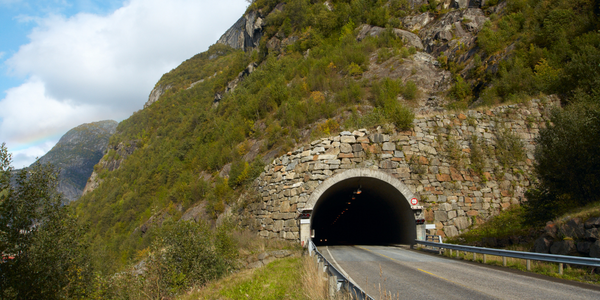Technology Category
- Application Infrastructure & Middleware - Data Exchange & Integration
- Application Infrastructure & Middleware - Middleware, SDKs & Libraries
Applicable Industries
- Buildings
- Construction & Infrastructure
Applicable Functions
- Logistics & Transportation
- Product Research & Development
Use Cases
- Last Mile Delivery
- Leasing Finance Automation
Services
- System Integration
About The Customer
Gen Re is a leading provider of reinsurance solutions to the life/health and property/casualty insurance industries. The company is represented in all major reinsurance markets through a network of more than 40 offices worldwide. Gen Re had a complex and varied technology landscape built over many years, including mainframe apps, Lotus Notes apps, packaged software products, and in-house Cloud applications running on Microsoft Azure. The company aimed to modernize its IT architecture, reduce technical debt, and improve agility in its development processes.
The Challenge
Gen Re, a leading provider of reinsurance solutions, was grappling with a complex IT architecture that included custom-developed and packaged software applications, a legacy of Lotus Notes apps, and various process automation technologies. The company also had in-house Cloud applications running on Microsoft Azure. This varied technology landscape, built over many years, led to silos between applications and in some cases, the rekeying of duplicative data. Gen Re aimed to reduce technical debt, speed up development, and improve agility. The company wanted to embrace an agile development approach with rapid iterative development and continuous feedback from users. However, the existing technology landscape and legacy systems posed significant challenges to achieving these goals.
The Solution
Gen Re selected OutSystems as its strategic low-code application development platform after an exhaustive evaluation. The company onboarded its development team in May 2021, initially cross-training existing developers and recruiting additional talent. The team spent the first three months defining a reference architecture and establishing a foundation of reusable modules, including authentication and authorization standards, file storage and Documentum integration, and integration to numerous core systems and Office 365. The first wave of applications went live in September 2021, followed by more complex applications in January 2022, and a third wave of business-critical, time-sensitive projects in March 2022. Gen Re now uses OutSystems to compose novel solutions that integrate multiple systems, including Azure Active Directory, Office 365, Documentum, RPA (Automation Anywhere), SAP, Dynamics 365, and numerous internal applications.
Operational Impact
Quantitative Benefit

Case Study missing?
Start adding your own!
Register with your work email and create a new case study profile for your business.
Related Case Studies.

Case Study
Energy Saving & Power Monitoring System
Recently a university in Taiwan was experiencing dramatic power usage increases due to its growing number of campus buildings and students. Aiming to analyze their power consumption and increase their power efficiency across 52 buildings, the university wanted to build a power management system utilizing web-based hardware and software. With these goals in mind, they contacted Advantech to help them develop their system and provide them with the means to save energy in the years to come.

Case Study
IoT System for Tunnel Construction
The Zenitaka Corporation ('Zenitaka') has two major business areas: its architectural business focuses on structures such as government buildings, office buildings, and commercial facilities, while its civil engineering business is targeted at structures such as tunnels, bridges and dams. Within these areas, there presented two issues that have always persisted in regard to the construction of mountain tunnels. These issues are 'improving safety" and "reducing energy consumption". Mountain tunnels construction requires a massive amount of electricity. This is because there are many kinds of electrical equipment being used day and night, including construction machinery, construction lighting, and ventilating fan. Despite this, the amount of power consumption is generally not tightly managed. In many cases, the exact amount of power consumption is only ascertained when the bill from the power company becomes available. Sometimes, corporations install demand-monitoring equipment to help curb the maximum power demanded. However, even in these cases, the devices only allow the total volume of power consumption to be ascertained, or they may issue warnings to prevent the contracted volume of power from being exceeded. In order to tackle the issue of reducing power consumption, it was first necessary to obtain an accurate breakdown of how much power was being used in each particular area. In other words, we needed to be able to visualize the amount of power being consumed. Safety, was also not being managed very rigorously. Even now, tunnel construction sites often use a 'name label' system for managing entry into the work site. Specifically, red labels with white reverse sides that bear the workers' names on both sides are displayed at the tunnel work site entrance. The workers themselves then flip the name label to the appropriate side when entering or exiting from the work site to indicate whether or not they are working inside the tunnel at any given time. If a worker forgets to flip his or her name label when entering or exiting from the tunnel, management cannot be performed effectively. In order to tackle the challenges mentioned above, Zenitaka decided to build a system that could improve the safety of tunnel construction as well as reduce the amount of power consumed. In other words, this new system would facilitate a clear picture of which workers were working in each location at the mountain tunnel construction site, as well as which processes were being carried out at those respective locations at any given time. The system would maintain the safety of all workers while also carefully controlling the electrical equipment to reduce unnecessary power consumption. Having decided on the concept, our next concern was whether there existed any kind of robust hardware that would not break down at the construction work site, that could move freely in response to changes in the working environment, and that could accurately detect workers and vehicles using radio frequency identification (RFID). Given that this system would involve many components that were new to Zenitaka, we decided to enlist the cooperation of E.I.Sol Co., Ltd. ('E.I.Sol') as our joint development partner, as they had provided us with a highly practical proposal.

Case Study
Intelligent Building Automation System and Energy Saving Solution
One of the most difficult problems facing the world is conserving energy in buildings. However, it is not easy to have a cost-effective solution to reduce energy usage in a building. One solution for saving energy is to implement an intelligent building automation system (BAS) which can be controlled according to its schedule. In Indonesia a large university with a five floor building and 22 classrooms wanted to save the amount of energy being used.

Case Study
Powering Smart Home Automation solutions with IoT for Energy conservation
Many industry leaders that offer Smart Energy Management products & solutions face challenges including:How to build a scalable platform that can automatically scale-up to on-board ‘n’ number of Smart home devicesData security, solution availability, and reliability are the other critical factors to deal withHow to create a robust common IoT platform that handles any kind of smart devicesHow to enable data management capabilities that would help in intelligent decision-making

Case Study
Splunk Partnership Ties Together Big Data & IoT Services
Splunk was faced with the need to meet emerging customer demands for interfacing IoT projects to its suite of services. The company required an IoT partner that would be able to easily and quickly integrate with its Splunk Enterprise platform, rather than allocating development resources and time to building out an IoT interface and application platform.








